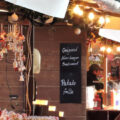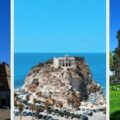Florence is perfect for fashion & shopping lovers. Let’s learn about the history of Italian fashion, shopping itineraries in Tuscany, and dressmaking workshops in this beautiful land.
A brief history of Italian fashion
Italian fashion started to become the most fashionable in Europe in the 11th century, and reached its peak during the Renaissance. Florence was among the powerful cities of the time that began to produce jewelry, textiles, shoes and elaborate dresses. In particular, fashion in Italy was largely influenced by the masterpieces of Michelangelo, Raphael and Botticelli, and by clothes and accessories worn by members of the Medici Family in Florence.While Italian fashion in general fell into decline in the 17th century, Florence was among the cities where the clothing activity never stopped. In the late 19th and early 20th centuries, some of the first Italian fashion houses were founded, such as Gucci and Ferragamo in Florence, Bulgari in Rome and Prada in Milan.https://www.youtube.com/watch?v=18XTiMk_JHUIn the 1960s, the designer handbags produced by Gucci drew the attention of numerous stars and celebrities, such as Grace Kelly, Audrey Hepburn and Jacqueline Kennedy Onassis. Florence was Italy’s fashion capital in the 50s and 60s, and is still today considered an important center for the sector, featuring exclusive shopping districts.
Fashion & Shopping itineraries in Tuscany
Florence and surroundings are the ideal destination for fashion and shopping lovers.If you are looking for the top luxury goods in town, head towards Via Tornabuoni and Via della Vigna Nuova. Here you will find all major Italian and international fashion brands!Florence is also a city of traditions, where you can buy high quality local handicrafts. For example, the town is famous for its leather goods, jewels and embroidery works. Looking for these? Make sure to stop by the market of San Lorenzo, where the colourful display of handmade leather goods will surprise you. At the marketplace of Loggia del Porcellino there are lovely ceramics, marbled-paper objects and fabrics. Finally, Ponte Vecchio features amazing jewellery shops offering the best tradition of Italian goldsmiths.If you want to shop in luxury outlets, there are many around Florence and in other Tuscan cities. The following are among the most famous…The Mall in Reggello (Florence), is the most famous shopping outlet in Tuscany, specialized in fashion designer shops. Gucci, Ferragamo, Cavalli, Armani, Valentino and Tod’s for the Italian houses; Alexander McQueen, Burberry, Stella McCartney and Yves Saint Laurent for the international brands… you name it, and you will find it.The Barberino Designer Outlet is located in Barberino del Mugello (Florence), and offers more than 100 shops of the best brands selling almost everything from clothing to cosmetics, from electrical appliances to chocolate and shoes.Valdichiana Outlet Village is 30 minutes south of Arezzo. It features all the most prestigious Italian and international brands and all types of stores, for shoes, home furnishings, garments….In addition to these shopping villages, you will also find several factory outlets in Tuscany for famous fashion designers. Examples? Dolce e Gabbana in Incisa in Val D’Arno (Florence); Roberto Cavalli in Sesto Fiorentino (Florence), and Fendi and Prada, both in Reggello (Florence)For detailed information on all shopping outlets and how to reach them, visitdiscovertuscany.com
Pattern & Dressmaking Course in Florence
If, apart from shopping, you also enjoy creating your own fashion clothing, then there is no better place than Florence where to sign up for a course in dressmaking, tailoring and pattern cutting. Studiainitalia, an agency specialized in creative tourism and educational travel, offers a fantastic Pattern and Dressmaking course in the historic center of Florence, right in the workshop of a local master artisan. The course includes a phase of modeling on paper and a subsequent product realization. Then, students will study specifically the molding technique to get the general understanding of patterns, to finally create a complete garment. The course prepares students to a practical approach to fashion and couture, allowing them to assemble proper clothing, to learn about different techniques of sewing, and to recognize different types of fibers. The course is available from beginner to advanced levels, with a choice of workshops with 6, 10 or 20 teaching hours per week.
Click for more information on prices and duration of the Fashion Programme in Florence.




